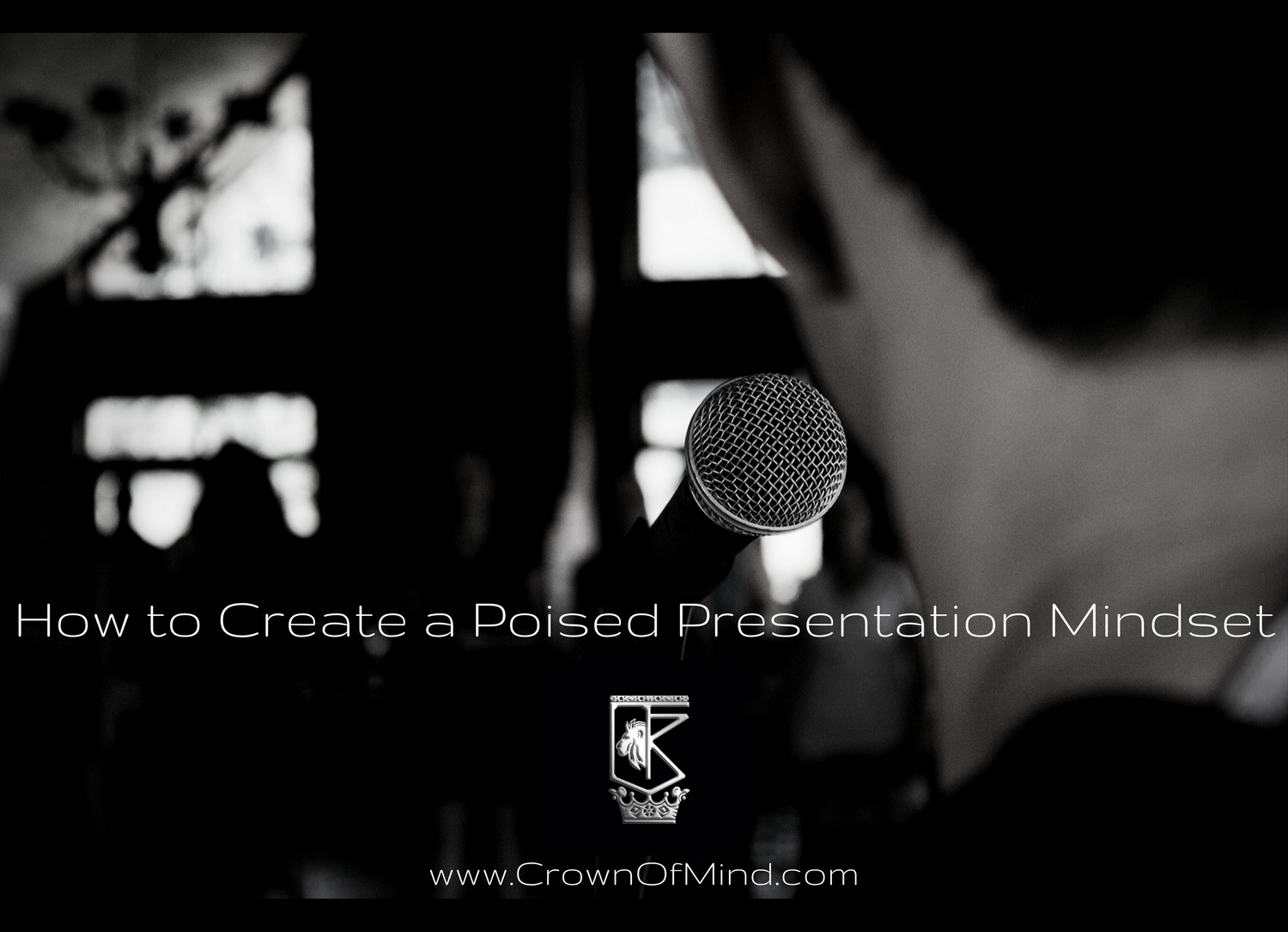There’s a general assumption that people prefer death over public speaking. Perhaps it’s the fear of it that weighs being in a casket lower on the scale. This fear in the mind of the possessor appears justified. After all, there’s much to fear about speaking in public right?
There is…
- The attention placed on you by everyone. Their eyes focused on every move you make, every word you say.
- The thoughts others might have about what you say and do.
- How others may talk to each other about what you say or do.
- What people outside the presentation might think about what you say or do.
- What you think about what you’re saying or doing because others might think you’re saying or doing something foolish
The trend? These thoughts that induce fear all connect to what the presenter thinks others are thinking. Like all fears, the fear of public speaking is an externalized projection of the imagination. The imagination, because of its power to influence our systems and outward manifestations with the life force, ends up creating what we actually feared: self-fulfilling prophecy.
The tips below are methods that collectively can assist you in shaping the presentation so you remain poised and powerful. Most of these will be very effective in small groups, such as a company presentation.
☐ Breathing
Practice the Zazen technique from my previous posts. Learn this so that you can apply it at any time it’s needed. The practice places governance of your emotions back in the realm of your will. It also gives you greater access to perform visualization techniques that activate your life force.
☐ Don’t say, “I’m so nervous” or “This is my first presentation.”
When you begin the presentation, refrain from using these statements. When you say them to yourself, you program your spirit to begin operating from that position. When you say them to the audience, you program yourself to operate from that position, and you program the audience to perceive you as a newbie. Even if you are, they don’t need to know it.
☐ Use the Presentation Pause
Refer to audio on this technique. Pausing enables you to gather thoughts, and provides space for the audience to digest information you just gave.
https://www.youtube.com/watch?v=Ma5V3eDfDp0
☐ Put the audience under a visualization
Give your audience a direct experience of your subject matter by putting them into a visualization. Rather than go through the detailed Zazen, you can simply ask them to close their eyes, breathe deep from the abdomen and walk them through a guided experience. This can spark further discussion and ultimately allow them to “taste” the presentation on an experiential level.
☐ Elicit feedback from the audience
You can do this by asking questions and prompting discussion, if the environment permits. Presenting to 10,000 might not be suitable for this practice but presenting to 100 might be. This creates a participatory bond between the audience and you. Their energy in comments and ideas expand the presentation rather than you continuing to talk for 2 hours straight without give-and-take.
☐ Look around the room
When you’re frozen in fear speech, the desire to move about the room might not feel attractive. You can gradually dissolve the rigidity by looking around. Make eye contact with more than one person in the audience. Smile at them. Look at some of the empty chairs. The more you expand your eye range in the room the more comfortable you will feel engaging there.
☐ Use form for your presentation in print
In the context of a company presentation, it works to your advantage to give it form. This means create a package. If you have a slide presentation, create a summarized version of it in print unless explicitly informed not to. Ensure your pages are organized and add a cover page with your name, presentation title and the date. Staple them and make enough copies for all in attendance.
☐ Record your presentation visually or audibly
If you’re discussing content that isn’t totally confidential, inquire about the possibility to record it. You can use this on any portfolio sites you have and listen to it for feedback to improve.
☐ Give a feedback form
This is to be used at the end. Your form can include a few questions about their presentation experience. This information is important. You can gauge the audience’s quality perception, know where to improve and what more to target. You can also use positive statements written as testimonials for your portfolio.
And last but not least…
Recognize that you are a divine being and have the capacity to overcome the barrier of fear. Because you are of the divine spark, you have the power to manifest your intent and face challenges with power and peace.






